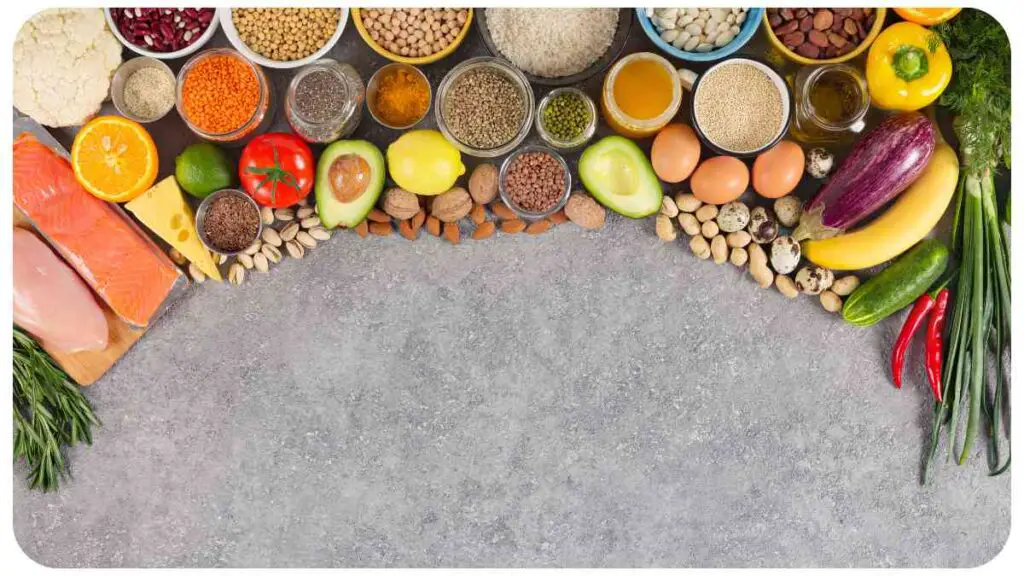Welcome to the quick and easy guide on how to eat out as a vegan! Being a vegan doesn’t mean sacrificing dining experiences. With a little planning and knowledge, you can enjoy delicious meals at various restaurants while adhering to your vegan lifestyle.
In this article, we will explore how to find vegan-friendly establishments, decipher menus, communicate with restaurant staff, manage social situations, stay healthy, and more.
Let’s dive in!
| Tips for Eating Out as a Vegan |
|---|
| Research vegan-friendly restaurants and seek recommendations from local vegans or online directories. |
| Clear communication with restaurant staff regarding your dietary preferences and the importance of minimizing cross-contamination is crucial. |
| Be aware of common non-vegan ingredients that may be hidden in dishes and familiarize yourself with vegan alternatives. |
| Don’t hesitate to make special requests and ask for modifications to suit your vegan lifestyle. |
| Explore different cuisines and look for vegan-friendly options in international dishes. |
| When dining with non-vegan companions, suggest restaurants that cater to both vegan and non-vegan preferences. |
| Plan ahead by carrying vegan snacks and desserts to ensure you have options in case of limited choices. |
| Ensure you’re getting essential nutrients in your vegan diet, considering vitamin supplements if necessary. |
| Embrace the journey and share your vegan lifestyle with others, contributing to a more compassionate world. |
How to Find Vegan-Friendly Restaurants
As a vegan, it’s essential to locate restaurants that cater to your dietary needs. Thankfully, many establishments nowadays offer vegan-friendly options.
When searching for vegan-friendly restaurants, consider asking for recommendations from local vegans, checking online directories, or using smartphone apps specifically designed to help you find vegan or vegan-friendly establishments.
Concerned about the environmental impact of your diet? Learn more in The Environmental Impact of a Vegan Diet: You’ll Be Shocked!. This eye-opening article explores the ecological benefits of veganism, providing compelling evidence to support your journey towards a more sustainable lifestyle.
Table: Top Vegan-Friendly Restaurants in Your City
| Restaurant Name | Cuisine | Vegan Options |
| The Green Leaf | Asian Fusion | Extensive vegan menu |
| Veggie Delight | American | Vegan burgers, sandwiches |
| Greens & Grains | Mediterranean | Vegan falafel, hummus |
| Roots Cafe | International | Vegan curries, salads |
| Sprout Salad Bar | Salad Bar | Customizable vegan salads |
Understanding Menu Options as a Vegan
When dining out, understanding menu options is crucial for vegans. While some restaurants have dedicated vegan menus, others may require a bit more investigation. Look for options like vegetable-based dishes, plant-based proteins (tofu, tempeh, seitan), and grain-based dishes.
If you love dining out, The Ultimate Guide to Dining Out as a Vegan: Tips and Tricks is a must-read! Discover expert tips and tricks that will make dining out as a vegan a breeze. From menu decoding to communicating with waitstaff, this guide covers it all.
Additionally, be cautious of common non-vegan ingredients like dairy, eggs, and honey, which can be hidden in various dishes.
Table: Common Vegan Ingredients to Look For
| Ingredient | Examples |
| Tofu | Tofu stir-fry, grilled tofu |
| Tempeh | Tempeh wraps, BBQ tempeh |
| Seitan | Seitan stir-fry, seitan skewers |
| Quinoa | Quinoa salad, quinoa stir-fry |
| Nutritional yeast | Cashew cheese, vegan cheese sauce |
Communicating with Restaurant Staff

Effective communication with restaurant staff is essential to ensure you receive vegan-friendly meals. Politely inform them about your dietary preferences and clarify which items on the menu are suitable for vegans.
Explain the importance of minimizing cross-contamination with non-vegan ingredients and inquire about cooking practices. By establishing a respectful dialogue, you can ensure a better dining experience.
Tips for Navigating Non-Vegan Menus
Encountering non-vegan menus doesn’t have to be discouraging. Many restaurants are willing to make slight modifications to accommodate dietary restrictions. Look for dishes that can easily be veganized, such as vegetable stir-fries without the non-vegan sauces or ask if they can substitute animal-based proteins with plant-based alternatives.
Be creative and explore different combinations to find delicious vegan options.
Differentiating between vegan and non-vegan options can be challenging. Get insights in Vegan vs. Non-Vegan: How to Spot the Differences. Learn the distinguishing factors, identify hidden ingredients, and make informed dining choices to align with your ethical and dietary preferences.
Table: Non-Vegan Ingredients to Watch Out For
| Ingredient | Commonly Found In |
| Butter | Sauces, baked goods |
| Fish Sauce | Thai curries, Asian dishes |
| Gelatin | Desserts, gummy candies |
| Worcestershire | BBQ sauce, marinades |
| Mayonnaise | Sandwiches, dressings |
Making Special Requests
Don’t hesitate to make special requests when dining out. Most restaurants are accommodating and willing to tailor dishes to suit your dietary needs. Ask for modifications like omitting cheese, substituting dairy milk with plant-based milk, or adding extra vegetables to a dish.
Remember to express gratitude for their efforts, as it encourages restaurants to continue catering to vegan diners.
Planning your next trip? Find vegan-friendly options in How to Find Vegan-Friendly Restaurants and Accommodation on Your Next Trip. Discover expert tips on locating vegan restaurants and suitable accommodations to ensure a hassle-free and enjoyable vegan travel experience
Vegan-Friendly Cuisines Around the World
Exploring different cuisines can be an exciting part of dining out as a vegan. Many cuisines offer a wide range of vegan-friendly dishes. Here are a few popular vegan-friendly international cuisines to consider:
Table: Popular Vegan-Friendly International Dishes
| Cuisine | Dish |
| Indian | Vegetable curry, masoor dal |
| Thai | Green papaya salad, pad thai |
| Mexican | Veggie fajitas, bean burritos |
| Ethiopian | Injera with lentils, cabbage |
| Lebanese | Falafel wrap, hummus with pita |
| Japanese | Vegetable sushi, tofu teriyaki |
Managing Social Situations as a Vegan
Dining out with non-vegan friends or family members can pose challenges, but it doesn’t have to be stressful. Firstly, suggest restaurants that offer vegan options to ensure there is something for everyone.
If you end up at a non-vegan restaurant, focus on the side dishes or salad options. You can also pack some vegan snacks to have as a backup. Remember, it’s about enjoying the company and the overall experience rather than solely focusing on the food.
Table: Vegan Substitutes for Common Non-Vegan Foods
| Non-Vegan Food | Vegan Substitute |
| Cheese | Vegan cheese, nutritional yeast |
| Eggs | Tofu scramble, chickpea flour |
| Milk | Almond milk, soy milk |
| Meat | Plant-based meat alternatives |
| Ice cream | Non-dairy ice cream (coconut, soy) |
Handling Challenges and Difficulties
Despite the growing awareness of veganism, challenges may arise while dining out. It’s important to stay calm and respectful when facing difficulties.
If there are limited vegan options, ask if they can modify dishes or create something based on available ingredients. Alternatively, you can check for nearby vegan-friendly restaurants or plan ahead by carrying some vegan-friendly snacks.
Snacks and Desserts On-the-Go
Having vegan snacks and desserts readily available can save the day in unforeseen situations. Whether you’re on a road trip or attending social events, having portable snacks will keep you satisfied throughout the day.
Consider options like fruit, nuts, energy bars, or vegan cookies. When it comes to desserts, look for vegan-friendly bakeries or explore homemade recipes using plant-based ingredients.
Table: Vegan Snacks and Desserts
| Snacks | Desserts |
| Fresh fruit | Vegan chocolate chip cookies |
| Trail mix | Vegan energy bars |
| Hummus and veggies | Coconut bliss ice cream |
| Vegan granola bars | Vegan cheesecake bites |
| Rice cakes | Fruit sorbet |
Staying Healthy and Nutrient-Dense

Maintaining a healthy and balanced vegan diet is crucial for overall well-being. Ensure you’re getting essential nutrients by incorporating a variety of plant-based foods.
Focus on consuming fruits, vegetables, whole grains, legumes, nuts, and seeds. Additionally, consider supplementing with vitamin B12, omega-3s, and vitamin D, as these nutrients may be challenging to obtain solely from a vegan diet.
Table: Essential Nutrients for Vegans
| Nutrient | Sources |
| Vitamin B12 | Fortified plant-based milk, |
| nutritional yeast, supplements | |
| Omega-3 fatty acids | Flaxseeds, chia seeds, walnuts |
| Vitamin D | Fortified non-dairy milk, |
| sunlight, supplements | |
| Iron | Lentils, spinach, tofu, quinoa |
| Calcium | Almonds, broccoli, fortified |
| plant-based milk, tofu |
Embracing the Journey
Being a vegan is not just about what you eat but also about a compassionate and mindful lifestyle. Embrace the journey and the positive impact you’re making on your health, the environment, and animal welfare.
By staying informed, making conscious choices, and sharing your experience with others, you contribute to a more compassionate world.
Running short on time but still want delicious vegan meals? Easy Vegan Recipes for Busy Weeknights has you covered! Explore quick and simple plant-based recipes that are perfect for busy schedules, allowing you to maintain a healthy and cruelty-free lifestyle effortlessly.
Conclusion
Eating out as a vegan shouldn’t be daunting or restrictive. By following the tips and strategies outlined in the article, you can confidently navigate the dining scene and find delicious vegan options wherever you go. Remember to research vegan-friendly restaurants, communicate your dietary needs with restaurant staff, make special requests, and explore different cuisines.
Enjoy the experience of trying new dishes and sharing your vegan lifestyle with others. By taking these steps, you can continue to enjoy excellent meals while staying true to your commitment to veganism. So go out, explore, and savor the joys of eating out as a vegan. Bon appétit!
Further Reading
Here are some additional resources that can provide further guidance and tips on eating out as a vegan:
- Oh She Glows: 10 Tips for Eating Out as a Vegan: This blog post offers valuable advice on how to navigate vegan dining options, communicate with restaurant staff, and make informed choices when eating out.
- Serene Trail: How to Eat Out as a Vegan: This comprehensive guide provides practical tips on finding vegan-friendly restaurants, deciphering menus, and making special requests to tailor your dining experience.
- Sarah’s Vegan Guide: Eating Out as a Vegan: Sarah’s Vegan Guide offers insights and resources for dining out as a vegan, including tips for various occasions and cuisines, as well as troubleshooting common challenges.
FAQs
Here are some frequently asked questions about eating out as a vegan:
What should I do if there are no vegan options available on the menu?
If there are no vegan options listed on the menu, don’t hesitate to ask the restaurant staff if they can accommodate your dietary needs. Many establishments are willing to modify dishes or create something off-menu to cater to your preferences.
How can I ensure there is no cross-contamination of non-vegan ingredients in my dish?
When communicating with restaurant staff, kindly express the importance of avoiding cross-contamination. Request that your dish be prepared separately, using clean utensils and equipment, to minimize the risk of non-vegan ingredients coming into contact with your meal.
Should I inform the restaurant in advance about my dietary restrictions?
While it’s not always necessary, informing the restaurant in advance can be helpful, especially for larger parties or special events. It gives the staff time to prepare vegan options or make necessary arrangements to ensure you have a delightful dining experience.
How can I find vegan-friendly options in non-vegan restaurants?
Even if a restaurant doesn’t have vegan options on their menu, they may be willing to make modifications or adapt dishes to suit your needs. Don’t be afraid to ask if they can exclude non-vegan ingredients, substitute animal-based proteins, or customize a dish based on what is available.
What can I do when dining out with non-vegan friends or family members?
When dining with non-vegan companions, try to suggest restaurants that offer both vegan and non-vegan options. That way, everyone can find something they enjoy. If the chosen restaurant has limited vegan choices, focus on side dishes, salads, or ask if they can prepare a customized dish to suit your preferences.
Remember, as a vegan, it’s essential to communicate your needs respectfully and be understanding of the restaurant’s limitations.

Hi! My name is Hellen James, and I’m a vegan lifestyle enthusiast. I’ve been living the vegan lifestyle for over 10 years now, and it’s been one of the best decisions I’ve ever made. The food is amazing, the community is incredible, and there’s no way I could go back after experiencing all this firsthand.


